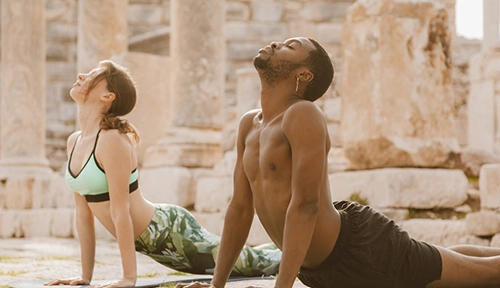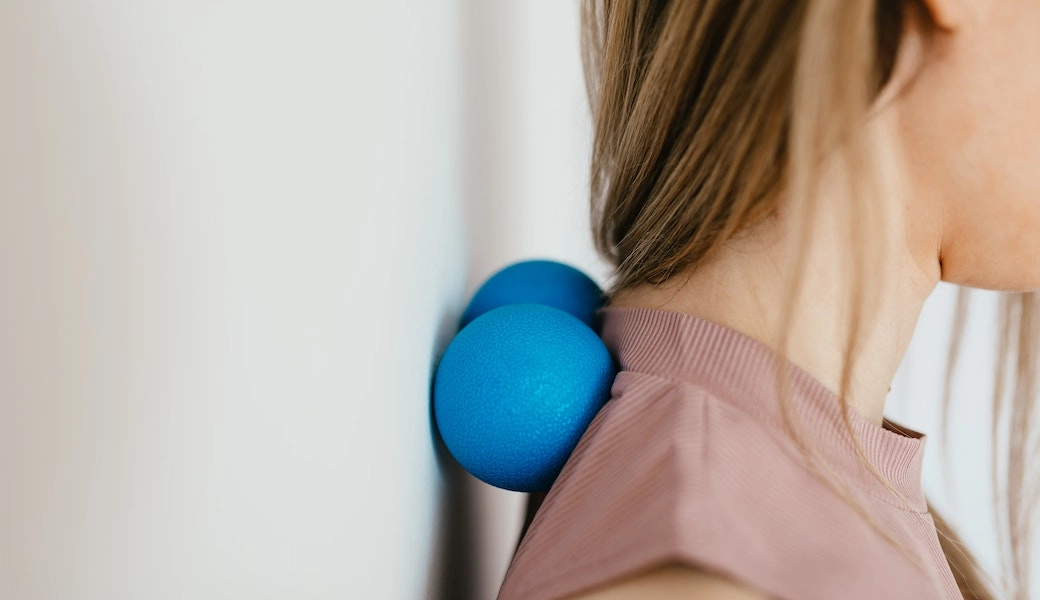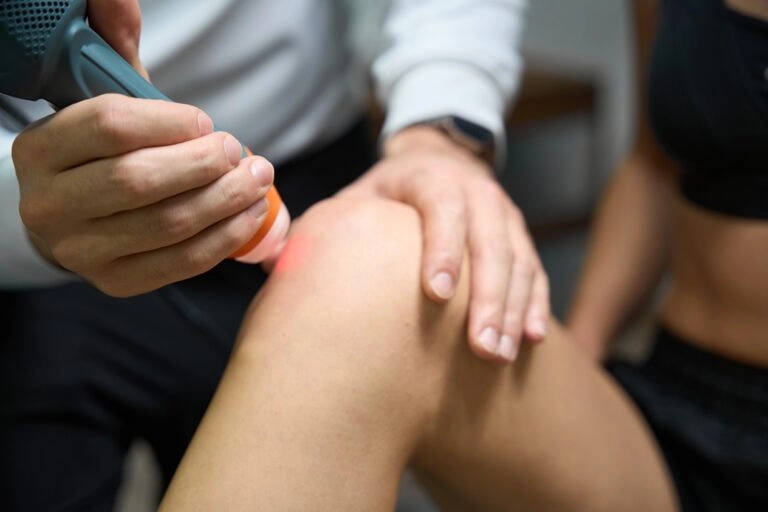Does your neck have an unnatural curve? Is it painful? To restore the natural curve in your neck and alleviate those problems, just keep reading.
There are a number of ways to help restore the natural curve of your neck. These include: Chiropractic Care, Massage Therapy, Maintaining Good Posture, Heat/Cold Therapy, Improving Diet, and Choosing the Right Pillow. A chiropractor’s office is well-equipped to guide you in such an endeavor.
One of the first rules of chiropractic medicine is to exhaust conservative techniques before moving on to more potent options like surgery or high-powered painkillers. The next rule is to develop a multi-pronged offense as required.
Techniques To Restore the Natural Curve of Your Neck
Although some types of neck problems can be fixed with chiropractic care or massage alone, the two options are even more effective when used together. The same holds for physical therapy and other conservative approaches. Different techniques often have a multiplicative effect on each other.
So … let’s look at some conservative ways to restore the natural curve of your neck.
1. Chiropractic Care
A chiropractor is an expert in the musculoskeletal system. So, they are well-equipped to diagnose and treat issues of the spine and neck. To restore the natural curve of your neck, a chiropractor has many tools at his disposal:
Cervical Adjustments
This is typically administered by manual manipulation of the joints in the cervical spine. It restores mobility and range of motion and goes a long way in restoring the natural curve of your neck.
Cervical Mobilization
This chiropractic technique involves the manipulation of the vertebrae in the neck. Here. individual vertebrae are moved from side-to-side to ease fixations and reduce areas of restricted motion.
Cervical Manual Traction
Here, the chiropractor gently pulls the neck in order to stretch it and reduce tension. The chiropractor willi cycle through different angles to find the one most beneficial for the patient.
Cervical Drop Technique
When using this technique, the chiropractor will have the patient lay on his/her side or stomach on a special chiropractic table. A series of pressure applications are used to reduce fixations in the cervical vertebrae.
Miscellaneous Chiropractic Techniques and Technologies
A chiropractor’s arsenal is not limited to the four techniques listed above. Other options at their disposal to treat neck and shoulder pain can improve posture and help restore the natural curve of your neck. Some of these include:
- Advice on appropriate supplements, diet, exercises, additional therapies, and posture
- The use of ultrasound
- Cold laser therapy
- A TENS device (low level electrical stimulation of the muscles)
At Better Health Alaska our chiropractors have helped thousands of people with neck issues by providing chiropractic care for neck pain and other issues.
2. Massage Therapy
Massage therapy is another avenue. When attempting to restore the natural curvature of your neck, this therapy involves the manual massage and manipulation of the muscles around your neck and shoulder. This reduces tension. With less tension, other therapies (like the whole chiropractic techniques listed above) become more effective. Plus, it helps with posture.
3. Good Posture
One of the things your chiropractor will bring to your attention is the importance of good posture. Poor posture alone is often one of the major causes of unnatural neck curvature. By improving your posture – either by using posture-specific exercises or simply by just being aware of the issue – you can take formidable steps to restore the natural curve in your neck.
4. Heat/Cold Therapy
Heat and cold therapy is an often prescribed remedy for many chiropractic issues – although it is usually not used by itself. Usually, chiropractors tell you to alternate applications of heat pads and cold pads. One or the other is applied to the particular area (in this case the necK) for 20 minutes. Then, you wait anywhere from 20 minutes to two hours before you apply the other one. The two techniques reduce inflammation and pain, opening up the blood vessels and allowing the nutrients and oxygen to flow to areas where they are needed.
5. Diet
Using diet is more of a long term approach to counteract the influence of a deteriorating spine. Basically, if you improve your diet, you can slow down spinal deterioration or even strengthen the spine. Foods to consider are: figs, bok choy, pumpkin seeds, green bean, salmon, and more.
6. Pillows
Another weapon in the arsenal to restore the natural curve of your neck is the type of pillow you use. The wrong pillow will hold your head at the wrong angle while you sleep. You’ll wake with a stiff neck. And that stiff neck will aggravate and worsen your other neck issues like curvature. The same pillow might not work the same for everyone, so you’ll have to do some research and testing on your own to determine which one is best for you. But here is a list of several options:
- Cervical Support Pillows:
- Water Pillows
- Memory Foam Pillows
- Feather Pillows
You can also use many of these techniques if you need a fast remedy for a stiff neck.

Using Exercise To Restore the Natural Curve of Your Neck
A critical therapy for restoring your neck’s natural curvature is exercise – particularly if you want to see long-lasting results.
The Journal of Physical Therapy Science published a study that found that both stretching exercise training and sling exercise training for stabilization Improved the range of motion of straight neck patients (although the stretching exercises were somewhat more effective).
In light of that, consider these neck-specific exercises for yourself:
- Chin Tucks
- Scapular Squeezes
- The Side to Side Strengthener
- Side Tilt
- The Clasp
- The Pullover
- Yoga
- Physical Therapy
Although the first six of these you might be able do on your own, if you find yourself having issues or pain or if you just want to be a little more careful, you should contact a medical professional. Start with a chiropractor to find out what the issue really is. And maybe from there get assistance from a physical therapist and instruction from a qualified yoga instructor.
Alternatively, if you suffer from a disc bulge in the neck, you can try c5-c6 neck exercises to deal with the problem.
Using a Towel To Restore the Natural Curve in Your Neck
It might not seem like much, but a towel can be a useful household tool to assist you in your battle to restore the natural curvature of your neck. How? Well, it has various uses.
First, it can help posture while you sleep. This is a critical factor for treating an unnatural curve in the neck (either a straight neck or a Dowager’s hump). If you sleep on your back, roll the towel up and place it under the small of your back for support. This will help you maintain proper posture while you sleep – something many people have difficulty with.
Alternatively, you might place it under your neck for the same purpose.
Additionally, a towel can assist in some exercises by serving as resistance or extending your reach. For example, in the Pullover exercise mentioned above, you can do a variation where, instead of grasping one hand with the other, each hand can grasp either end of the towel. This may help you do the stretch if you are having difficulties doing it with clasped hands.
Can You Fix a Straight Neck?
If you are wondering if all these exercises and such can truly fix a straight neck, rest assured that they can. Better Health Alaska has been treating patients with neck issues for over 20 years.
To ease your worries more, you can peruse this case study by Daniel M. Knowles III, D.C., Richelle Knowles, D.C., and Boo Burnier, B.A., D.C.. It involves a 31-year-old male undergoing Network Spinal Analysis chiropractic care which included 61 spinal adjustments over a period of six months. The end result: the patient’s body successfully underwent a reorganization of the cervical curve.
As far as the particulars involved in fixing a straight neck, the above study used primarily spinal adjustments – at least for the first six months. You can expect a similar approach from your chiropractor.
Other techniques that might be employed include the flexion-distraction technique or any of the various therapies mentioned above. Also, if you need to fix a hump neck rather than a straight neck, there are therapies, and techniques chiropractors can use for those as well.
How Can You Help Restore the Natural Curve of Your Neck While Laying In Bed?
In addition to minding your posture and taking steps to maintain your posture while you sleep, there is, in fact, a simple exercise you can do while laying in bed called the Neck Extension. Basically, you lie in bed on your back so that your neck extends a little ways off the edge of the bed. Allow your head to lower to the ground thereby bending your neck backward.
Hold the position for roughly sixty seconds and then pull your head back up. Repeat several times, but discontinue if you start to feel pain or a tingly sensation or anything strange like that. Done correctly, this exercise will help increase the space between vertebrae, possibly allowing a problem disc to slip back into its proper place.
Conclusion
If you are looking to restore the natural curve in your neck, these are just some of the tools available to a chiropractor and his/her staff to help you. If you have any neck or spinal issues, visiting a chiropractor’s office, like Better Health Alaska, is an important first step.
Sources:









